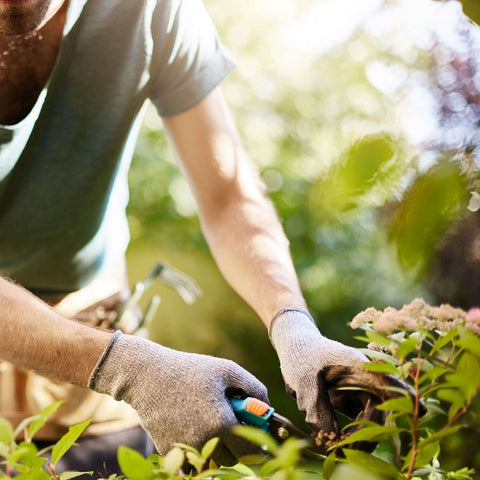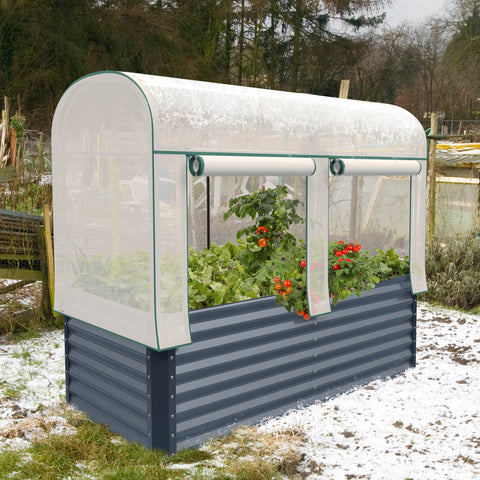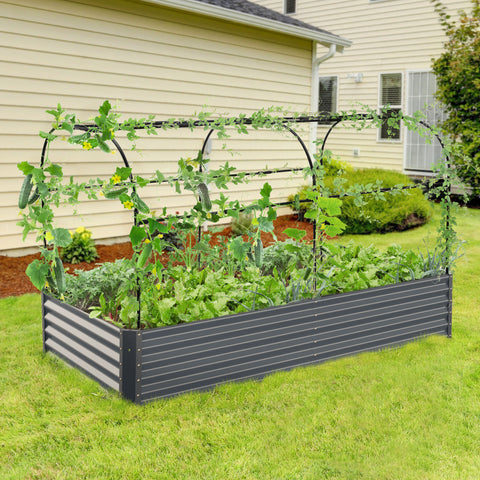Creating a lavender garden on a raised garden bed can add attractive aromas and visual effects to your garden. Lavender is a beautiful and versatile plant whose purple flowers and intoxicating scent make it the first choice of many gardening enthusiasts. Not only that, but lavender has many beneficial uses, such as medicinal, aromatic and insect repellent. By planting lavender in raised garden beds, you can create a pleasant and functional garden space. In this article, we will explore how to grow lavender in raised garden beds, as well as some tips and advice to help you create a gorgeous lavender garden.

Lavender is a good plant to grow on raised garden beds. Lavender is a drought-tolerant, cold-tolerant perennial herb that needs good drainage and a sunny environment to grow. Planting lavender on raised garden beds will provide better drainage and prevent over-soaking of roots. In addition, raised beds provide better ventilation and soil temperature regulation, which helps lavender grow. Make sure to use the proper soil mixture in the garden bed to ensure that lavender roots get enough nutrients and room to grow. Note that lavender may need pruning and proper management as it grows to maintain its shape and health.
What is the appropriate temperature for planting lavender in garden beds
Lavender is a plant that prefers warm climates, with a suitable planting temperature of 15 to 30 degrees Celsius (59 to 86 degrees Fahrenheit). It likes sunny and warm conditions, and for growth and flower formation, higher temperatures are favorable. At lower temperatures, lavender may grow slowly or become dormant. When temperatures are near freezing, lavender may suffer from frost damage.
In warmer regions, lavender may need proper shading during hot summer periods to protect the plant from excessive exposure. Also, provide an adequate water supply, but ensure good drainage to avoid the adverse effects of waterlogging on lavender.
In summary, lavender grows best in a warm environment, and ensuring that the temperature is kept within the range of 15 to 30 degrees Celsius (59 to 86 degrees Fahrenheit) will help promote healthy growth and prosperity of lavender.

Whether growing lavender in raised garden beds requires a greenhouse
Growing lavender in raised garden beds usually does not require a greenhouse to be built. Lavender is a highly adaptable plant, and they are usually able to adapt to a variety of climatic conditions. Lavender is usually able to grow and reproduce well in outdoor garden beds in warmer climates.
However, in cold climates, especially where winter temperatures are low, building a simple greenhouse structure may help protect lavender from severe cold and cold winds. This can be a simple plastic-covered structure that helps provide extra insulation against cold weather damage to the plant. The greenhouse structure can also provide more stable temperature and humidity conditions, which help lavender grow.
It is important to note that even if a greenhouse is established, care should be taken to maintain proper ventilation to avoid the adverse effects of overheating and high humidity in the greenhouse on lavender. Lavender prefers sunlight and good ventilation, and over-sealed greenhouses can lead to plant disease or poor growth.
Thus, in most cases, growing lavender in raised garden beds does not require a specialized greenhouse structure. They usually grow well in the right temperature range. But in colder climates, building simple greenhouse structures may be helpful for lavender growth and conservation.
How to Grow lavender in a raised garden bed

Growing lavender in raised garden beds is a relatively simple task. Here are some detailed steps to help you grow lavender successfully:
1. Choose the right location: Lavender requires full sunlight, so choose a sunny location and get at least six to eight hours of direct sunlight a day.
2. Prepare a garden bed: Make sure the garden bed is deep enough to accommodate the root system of the lavender. Usually, a raised garden bed depth of 6 to 12 inches (15 to 30 cm) is appropriate. Remove weeds and rocks from the bed to ensure good drainage.
3. Soil preparation: Lavender prefers calcareous soils with a pH between 6.5 and 7.5. You can improve the texture and drainage of the soil by adding leaf soil or decomposed compost to the bed. Mix the soil to ensure proper nutrient and water retention.
4. Plant lavender seedlings or seeds: You can choose to purchase lavender seedlings or seeds. Place seedlings or seeds in garden beds at the recommended spacing, usually 12 to 18 inches (30 to 45 cm) apart, depending on the growing characteristics of the lavender variety.
5. Moisturize and stabilize the plant: Water lightly, making sure the soil is moist but not wet. Lay a layer of organic mulch (such as hay or wood chips) around the lavender roots to maintain soil moisture and inhibit weed growth.
6. Water regularly: Lavender tolerates dry soil well, but still needs the right amount of water. Water the base of the plant, keeping the soil moist but not wet. Avoid overwatering, which can cause root rot.
7. Regular pruning and management: Regular pruning of lavender helps maintain its shape and promotes new growth. Pruning stems after flowering helps to keep the plant healthy and compact.
8. Insect and disease control: Lavender usually has a good resistance to pests and diseases. However, inspect the plant regularly, watch for any signs of pests or disease, and promptly take control measures such as manually removing pests or using organic pesticides.

Please note that these steps are general recommendations and will be subject to practical adjustments depending on the climate and growing conditions in your area. Over time, you will learn more about lavender's special needs and planting techniques to help you achieve better planting results.
By creating a lavender garden in a raised garden bed, you can add beauty, aroma and utility to your garden. Lavender is a drought-tolerant, cold-tolerant, easily cultivated plant suitable for garden beds. Not only do they provide a pleasing visual treat, they can also be used for a variety of purposes including medicinal, aromatic and insect repellent.
During the process of growing lavender in raised garden beds, be sure to select the appropriate variety, provide good drainage and sun exposure, and follow proper plant management practices. Regular pruning and moisturizing, with attention to insect and disease control, will help lavender grow and flourish.
Lavender can thrive in such an environment by taking advantage of the advantages of raised garden beds, such as providing good drainage and air circulation. Whether you want to create an intoxicating garden or wish to take advantage of the medicinal and aromatic properties of lavender, planting a lavender garden is an excellent choice.
So don't hesitate to start creating a lavender garden in your raised garden bed! Let the sea of flowers and attractive aroma of lavender bring beauty and practicality to your garden. Enjoy the wonderful experience of lavender as well as the fun of growing and caring for the plants. May you have a good harvest and a happy time in the lavender garden!









